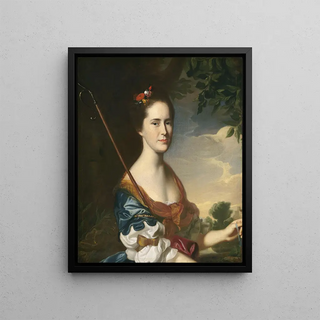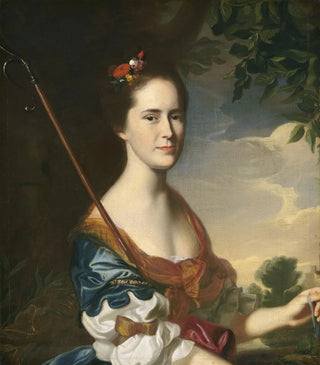Art print | Elizabeth Gray Otis Mme Samuel Alleyne Otis - John Singleton Copley


View from behind

Frame (optional)
Elizabeth Gray Otis Mme Samuel Alleyne Otis - John Singleton Copley – Captivating introduction
In the vast panorama of art history, some works stand out for their ability to capture the essence of an era, to immortalize iconic figures, and to evoke deep emotions. The art print Elizabeth Gray Otis Mme Samuel Alleyne Otis - John Singleton Copley is a perfect example. Created by one of the masters of 18th-century portraiture, this piece does more than depict a woman of American high society; it offers a genuine glimpse into the life and values of a time marked by significant sociopolitical changes. Gazing at this painting, the viewer is transported to a world where elegance and refinement blend with profound humanity.
Style and uniqueness of the work
Copley's style is characterized by meticulous attention to detail and masterful use of light and shadow. In this portrait, the artist manages to transcend mere physical representation of Elizabeth Gray Otis. Every element, from the drape of her dress to the delicate expressions on her face, demonstrates impressive technical mastery. Copley does not limit himself to a realistic approach; he also injects a psychological dimension into his work. Elizabeth's thoughtful gaze, combined with a graceful posture, suggests depth of character, intelligence, and sensitivity that go far beyond superficial social status. This ability to capture the soul of his subjects is one of the reasons why Copley is considered one of the greatest portraitists of his time.
The artist and his influence
John Singleton Copley, born in Boston in 1738, played a crucial role in the development of American portraiture. His artistic journey was marked by an relentless quest for perfection and a desire to rival European masters. At a time when America was still building its cultural identity, Copley managed to establish a style that combined tradition and innovation. His influence extends well beyond his own works, inspiring a generation of artists who sought to capture the complexity of the human experience through portraiture. By integrating narrative and emotional elements into his compositions, Copley opened

Matte finish

View from behind

Frame (optional)
Elizabeth Gray Otis Mme Samuel Alleyne Otis - John Singleton Copley – Captivating introduction
In the vast panorama of art history, some works stand out for their ability to capture the essence of an era, to immortalize iconic figures, and to evoke deep emotions. The art print Elizabeth Gray Otis Mme Samuel Alleyne Otis - John Singleton Copley is a perfect example. Created by one of the masters of 18th-century portraiture, this piece does more than depict a woman of American high society; it offers a genuine glimpse into the life and values of a time marked by significant sociopolitical changes. Gazing at this painting, the viewer is transported to a world where elegance and refinement blend with profound humanity.
Style and uniqueness of the work
Copley's style is characterized by meticulous attention to detail and masterful use of light and shadow. In this portrait, the artist manages to transcend mere physical representation of Elizabeth Gray Otis. Every element, from the drape of her dress to the delicate expressions on her face, demonstrates impressive technical mastery. Copley does not limit himself to a realistic approach; he also injects a psychological dimension into his work. Elizabeth's thoughtful gaze, combined with a graceful posture, suggests depth of character, intelligence, and sensitivity that go far beyond superficial social status. This ability to capture the soul of his subjects is one of the reasons why Copley is considered one of the greatest portraitists of his time.
The artist and his influence
John Singleton Copley, born in Boston in 1738, played a crucial role in the development of American portraiture. His artistic journey was marked by an relentless quest for perfection and a desire to rival European masters. At a time when America was still building its cultural identity, Copley managed to establish a style that combined tradition and innovation. His influence extends well beyond his own works, inspiring a generation of artists who sought to capture the complexity of the human experience through portraiture. By integrating narrative and emotional elements into his compositions, Copley opened






